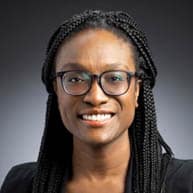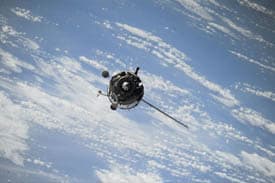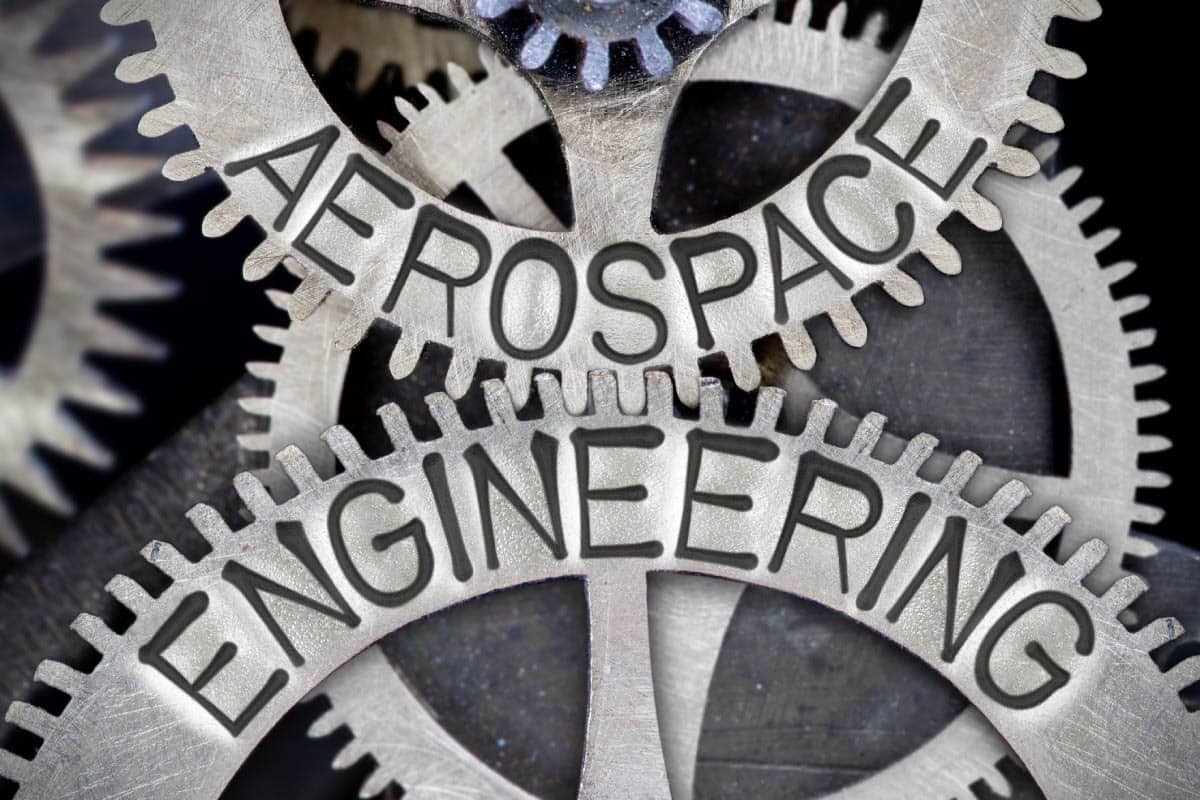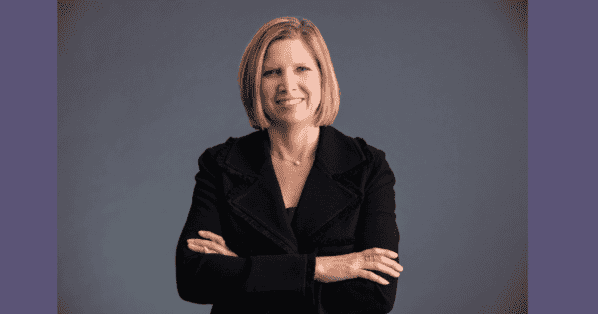Dr. Mellish works at the Johns Hopkins University Applied Physics Laboratory. Learn more about her work in Aerospace Engineering and how you can #BeThatEngineer!

As a child, I wanted to become an astronaut, and I was eager – even as a little kid – to begin preparing myself in any way I could. Resolute on my dream, when I was in junior high, I began to wonder, “what should a future astronaut study in college?” I did my research and found that Aerospace Engineering was a trending major amongst many astronauts. When it came time to apply to college, I only focused on schools that had aerospace engineering programs.
I went to Princeton University, where I studied Mechanical and Aerospace engineering. Although I knew Aerospace Engineering was a great way to get involved in STEM, I really didn’t know what engineering was in a day-to-day sense. After my freshman year, I was invited to participate in a summer internship at Princeton through the Mellon Fellowship Program, a program which allowed students to work in the lab of a Princeton professor. I worked in the lab of an Aerospace Engineering professor whose research focused on coordinated motion between robotic platforms. It was in this setting that I began to understand what engineering was, and that I absolutely loved engineering. This professor’s research team was composed of individuals from all backgrounds – Aerospace Engineering, Electrical Engineering, Computer Science, Mechanical Engineering, and all of their skills were needed to produce something highly innovative. The focus on problem solving and the necessity for diverse backgrounds is what I loved the most.
 From there, a fire was sparked, and I went on to participate in a similar summer research program named Alliances for Graduate Education and the Professoriate (AGEP) hosted at Rice University. Over two summers, I worked with two different Rice University faculty on projects that aided their research. The first project focused on mathematically characterizing the heating patterns in the rotational joints of a V-22 Osprey aircraft, while the second focused on using robotics for hospital patient rehabilitation. Understanding that research was my passion, I went on to attend the University of Maryland, where I obtained my master’s degree in Aerospace Engineering with a thesis that focused on cooperative control of multi-vehicle systems, and Purdue University, where I obtained my Ph.D. in Aeronautical and Astronautical Engineering with a focus on control theory and satellite maneuver detection. During my years in the Ph.D. program, I participated in two summer internships. The first was with NASA Goddard Space Flight Center in Greenbelt, Maryland, where I worked on the formation control of two cubesats, or small satellites, that served as portions of a virtual telescope in space. The second was with the Aerospace Corporation in El Segundo, California, where I improved the usability of a nonlinear actuator model for the Delta IV launch vehicle; nonlinear actuators are mechanical parts of a system that typically turn signals into motion.
From there, a fire was sparked, and I went on to participate in a similar summer research program named Alliances for Graduate Education and the Professoriate (AGEP) hosted at Rice University. Over two summers, I worked with two different Rice University faculty on projects that aided their research. The first project focused on mathematically characterizing the heating patterns in the rotational joints of a V-22 Osprey aircraft, while the second focused on using robotics for hospital patient rehabilitation. Understanding that research was my passion, I went on to attend the University of Maryland, where I obtained my master’s degree in Aerospace Engineering with a thesis that focused on cooperative control of multi-vehicle systems, and Purdue University, where I obtained my Ph.D. in Aeronautical and Astronautical Engineering with a focus on control theory and satellite maneuver detection. During my years in the Ph.D. program, I participated in two summer internships. The first was with NASA Goddard Space Flight Center in Greenbelt, Maryland, where I worked on the formation control of two cubesats, or small satellites, that served as portions of a virtual telescope in space. The second was with the Aerospace Corporation in El Segundo, California, where I improved the usability of a nonlinear actuator model for the Delta IV launch vehicle; nonlinear actuators are mechanical parts of a system that typically turn signals into motion.
Getting involved in these opportunities, from research with professors to NASA and the Aerospace Corporation, was a matter of keeping my eyes peeled for announcements that the university department administrator sent from companies looking for interns, and, as an undergrad, looking through the school database for alumni who posted job and internship opportunities.
I currently work for the Johns Hopkins University Applied Physics Laboratory (APL), in Laurel, Maryland. APL is a university-affiliated research center, an independent, not-for-profit organization that conducts essential research, development, and systems engineering to support national security needs. Using various mathematical and engineering tools, such as advanced calculus, I develop algorithms that are deployed on sensing systems that keep our nation safe from threats. I have always loved innovation, and one of the great things about working in a research and development setting is the ability to pitch project ideas via APL’s “Internal Research and Development” (IRAD) process. IRADs are typically highly competitive, but winning one allows staff members to work either independently or with a team to solve an existing problem that they have identified. Much like many innovative ideas, with IRADs, you have the potential to influence the course of research and development programs that ultimately impact everyday life.
 For girls interested in engineering, if you want an exciting career with many options in a booming industry, then Aerospace Engineering is a good choice. As with many engineering disciplines, it has its challenges (they don’t call it “rocket science” for nothing!), but the rewards are worth it. At times, there may be many “tough” concepts to learn in college, and sometimes it may seem as though everybody else understands the concepts in class but you. Hang in there and don’t give up! Many of the concepts in engineering can take years to fully grasp, but if you are diligent, you will indeed grasp these concepts and have a great career.
For girls interested in engineering, if you want an exciting career with many options in a booming industry, then Aerospace Engineering is a good choice. As with many engineering disciplines, it has its challenges (they don’t call it “rocket science” for nothing!), but the rewards are worth it. At times, there may be many “tough” concepts to learn in college, and sometimes it may seem as though everybody else understands the concepts in class but you. Hang in there and don’t give up! Many of the concepts in engineering can take years to fully grasp, but if you are diligent, you will indeed grasp these concepts and have a great career.
I would also suggest being flexible and well-rounded. Success may not always be a linear path; however, always having the mindset that you can learn from any situation or position you occupy will ensure that you not only are the most experienced person in many rooms you find yourself in, but also that you can relate to many different people. If something out there piques your interest, go and learn about it! Don’t be afraid to try new things. Innovative thought processes will likely come much easier as result – a very valuable asset in today’s rapidly advancing technical climate!
Author
-

Kristine Loh (she/her) is a PhD Candidate in Chemical Engineering at the University of Minnesota. As an NSF Graduate Research Fellow in the Ferry and Kortshagen Groups, she studies the optical properties of nontoxic nanomaterials for their applications in renewable energy technologies, such as solar windows and greenhouse roofs. Outside of research, she enjoys K-12 STEM outreach, experimenting with her air fryer, and trying new restaurants in the Twin Cities.






